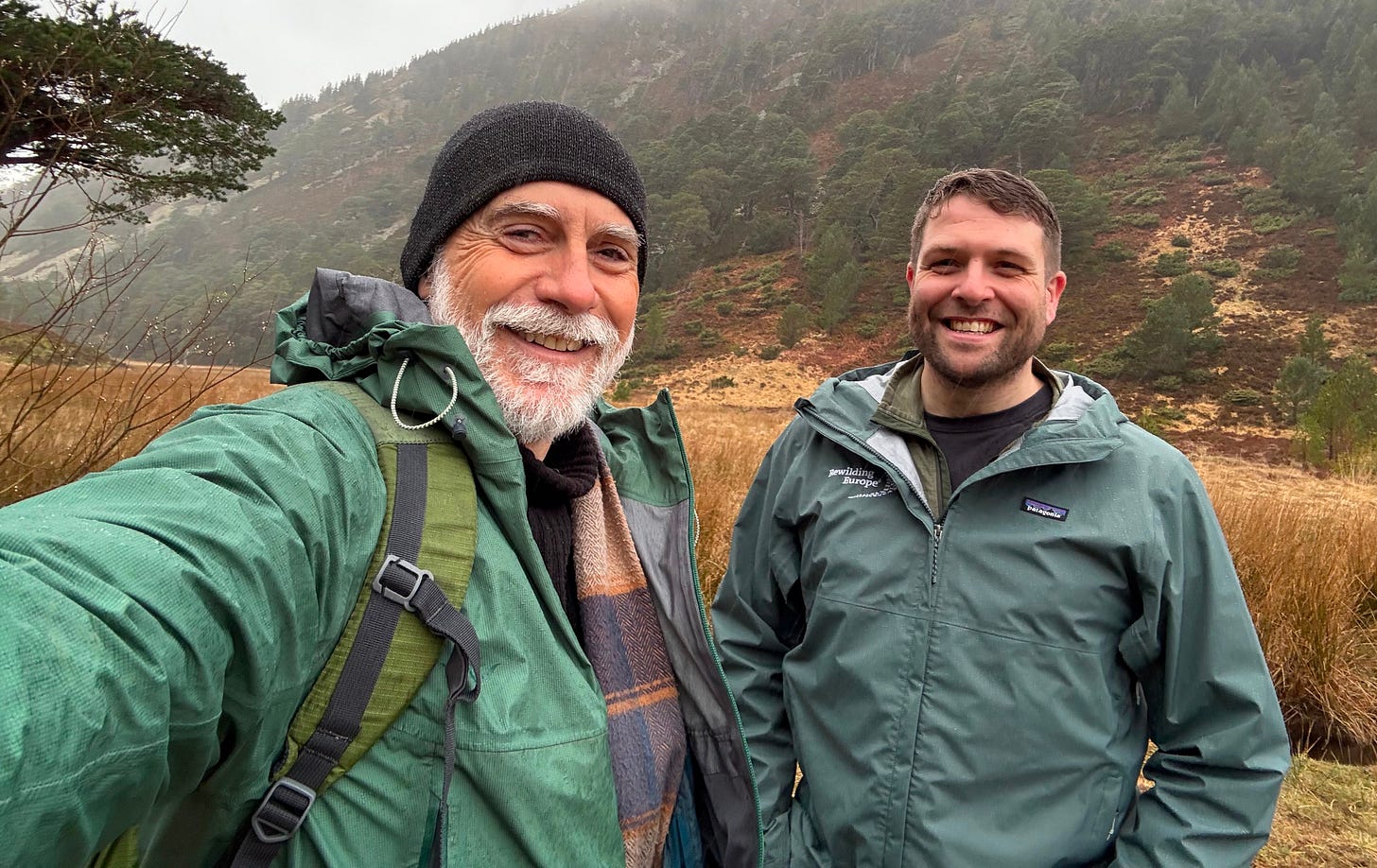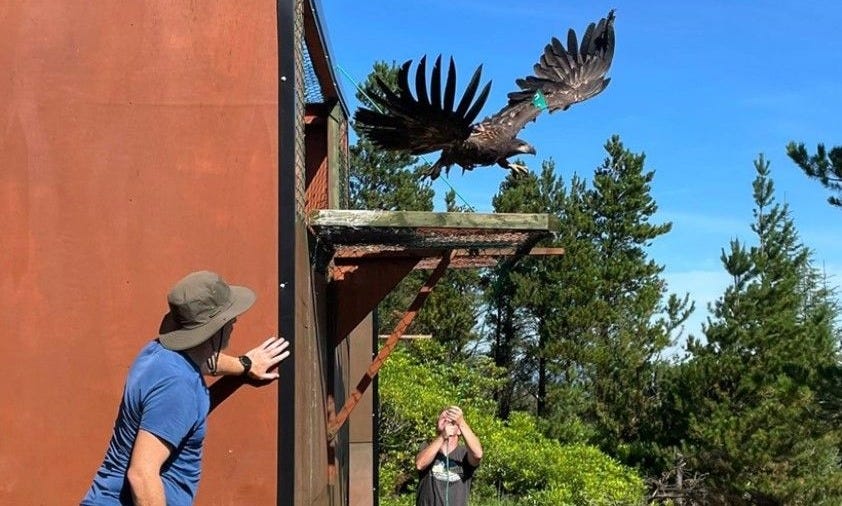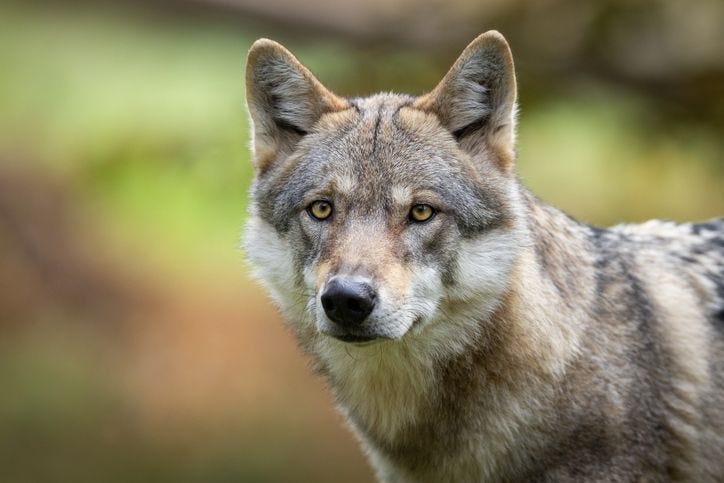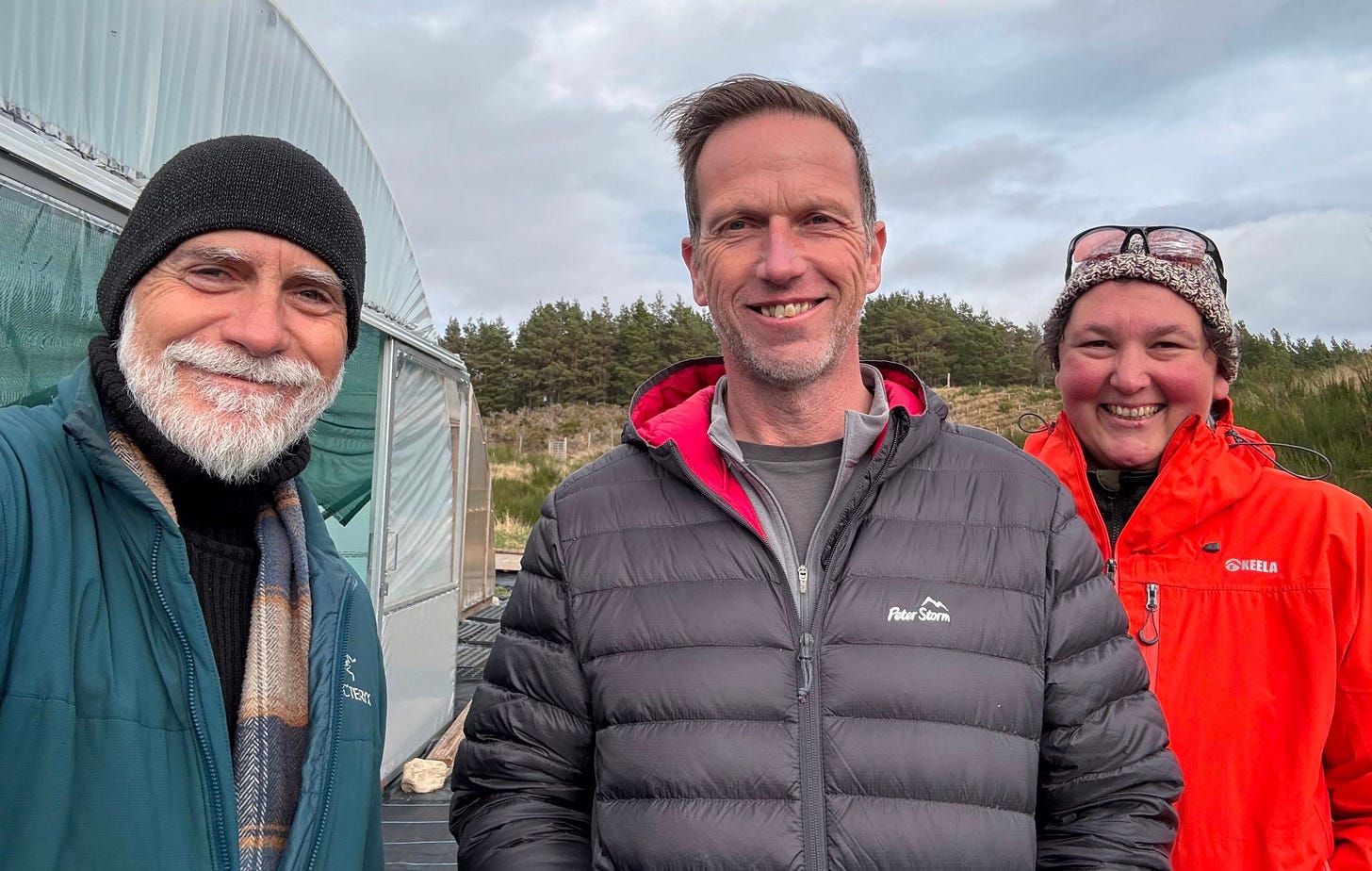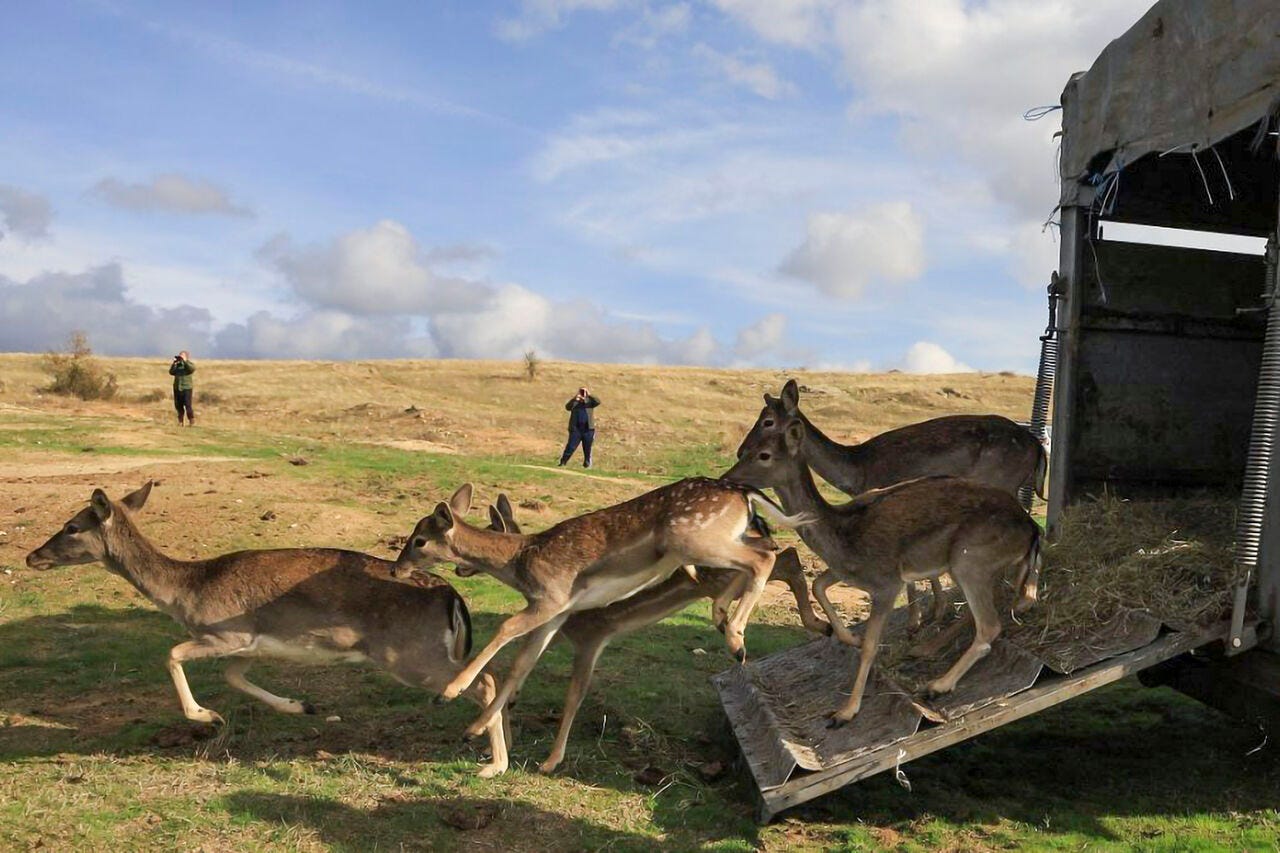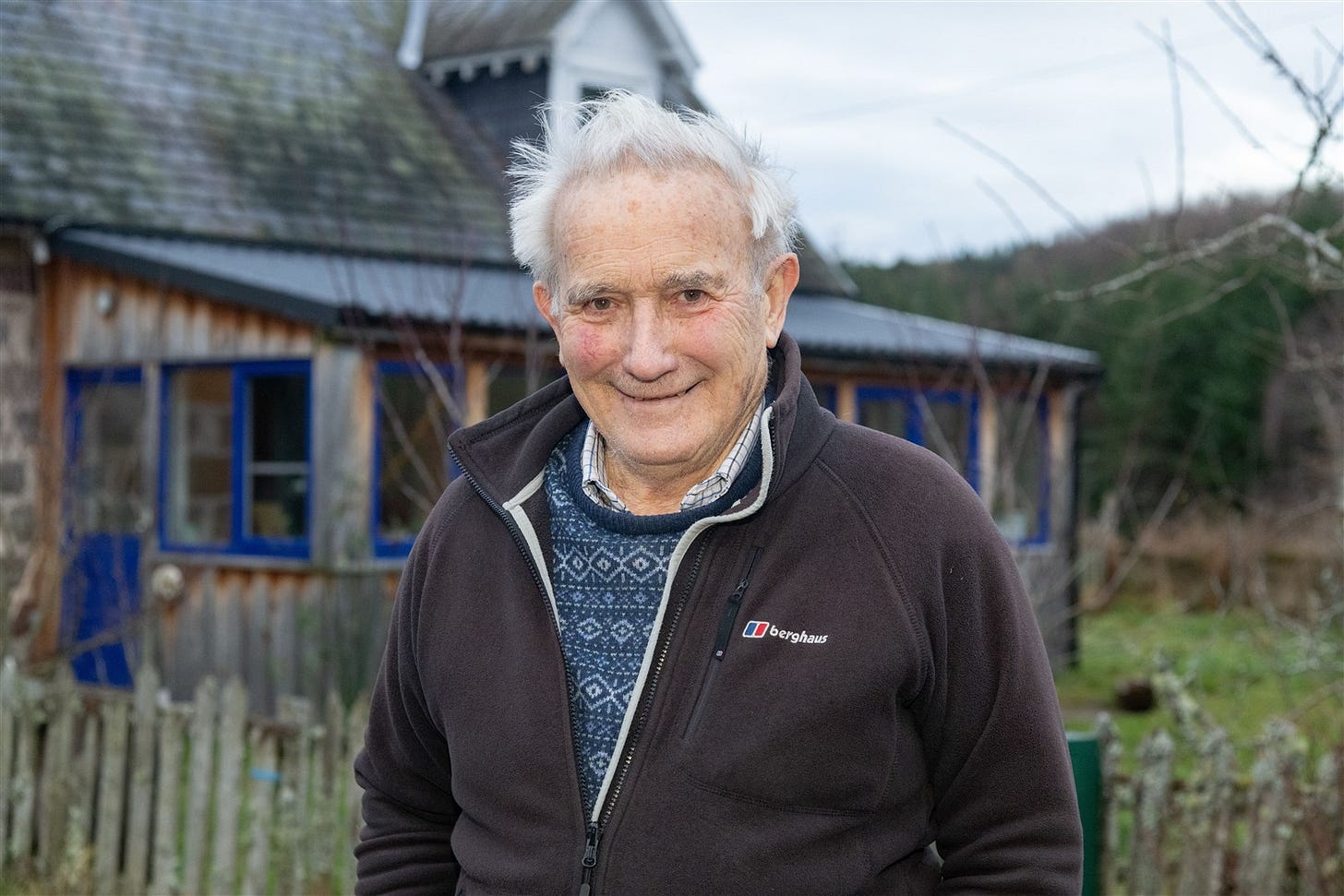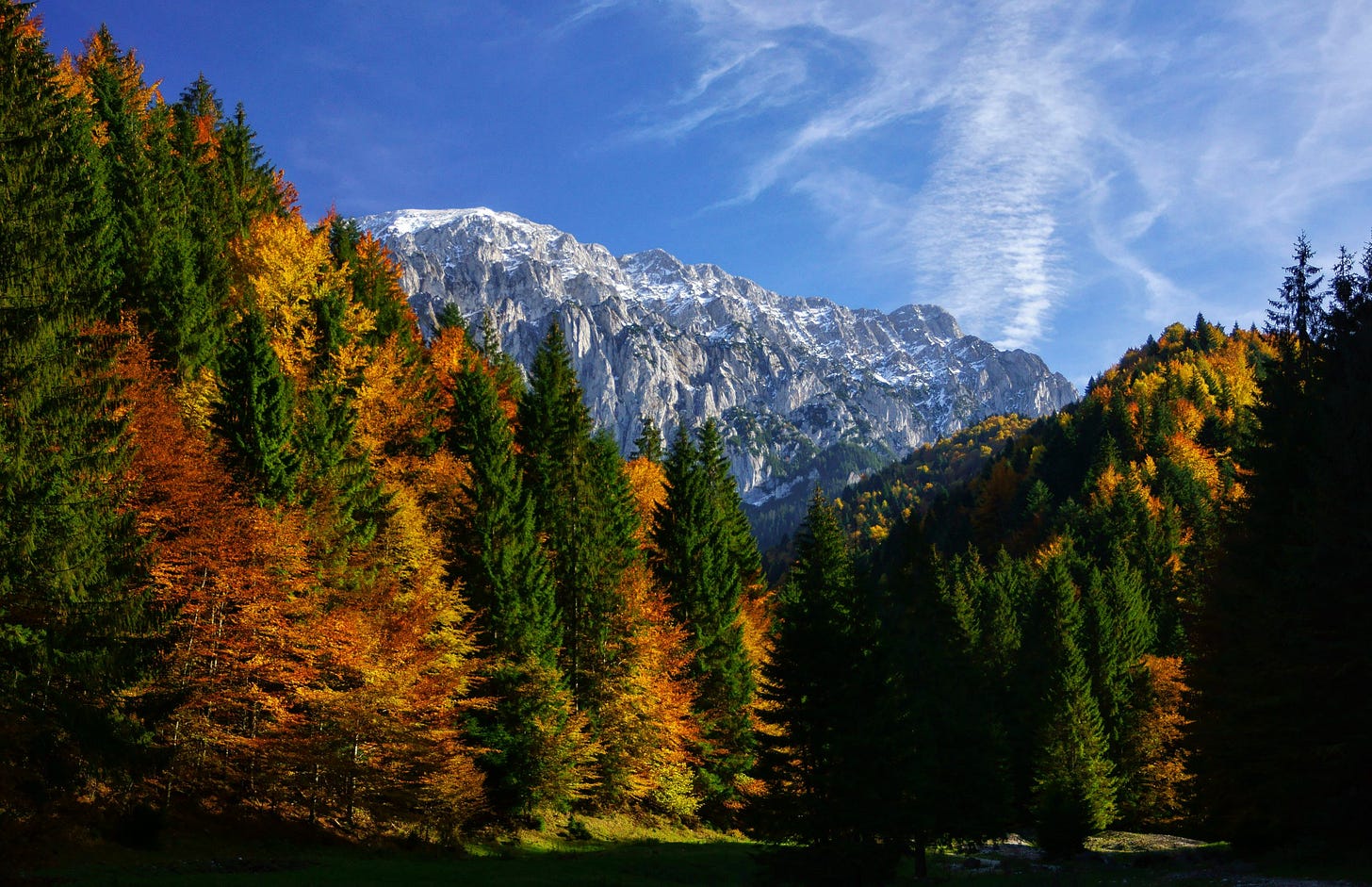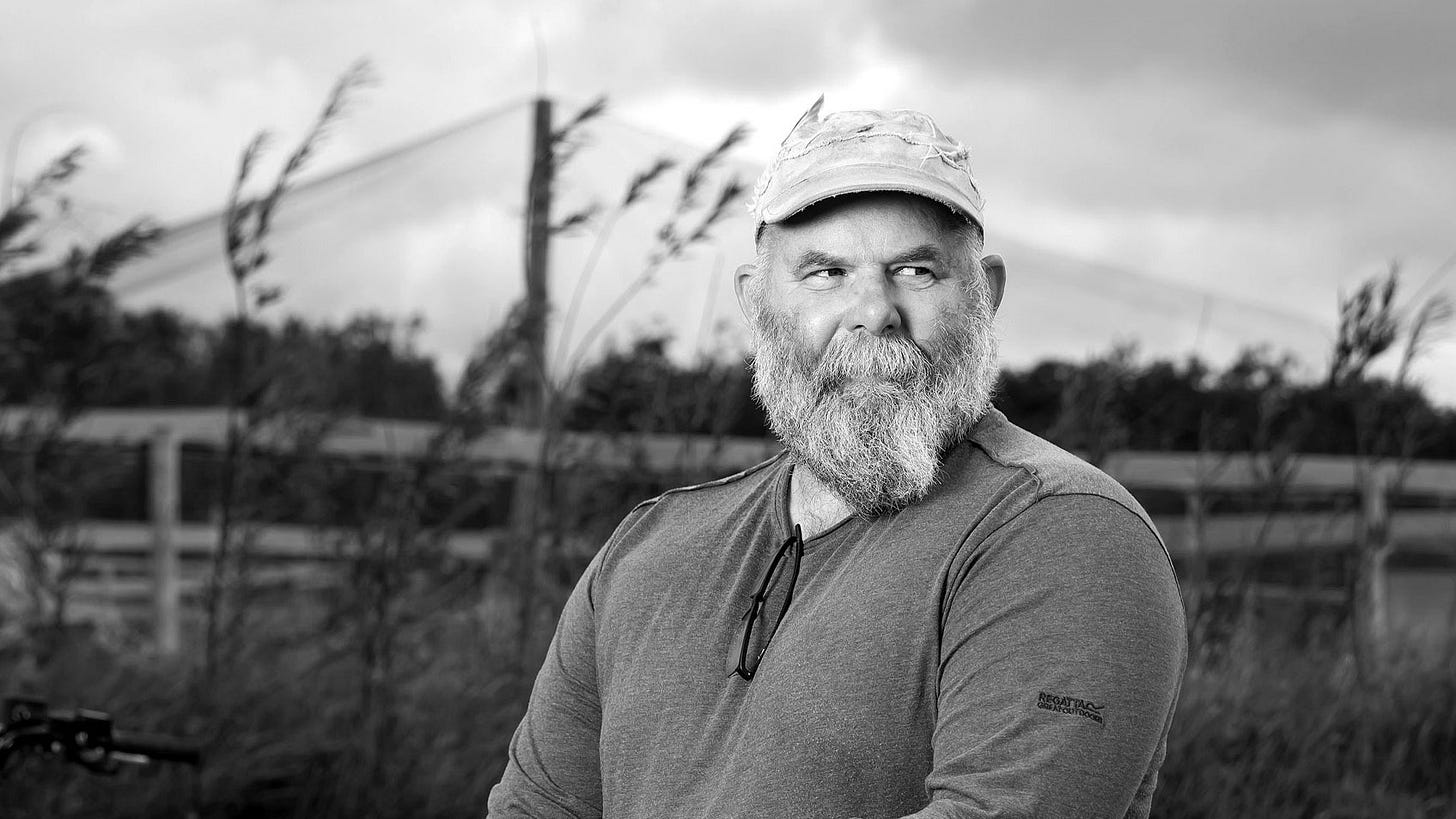Welcome to the latest edition of the Rewilder Weekly! 🦬🌳🐺🌞🌍
Before we get going with this week’s eight stories, a quick heads-up: Rewilding Europe’s new documentary “Two countries and one Oder Delta” will have its online premiere on the 3rd of April (at 17:00 CET) on the organization’s YouTube channel. Mark your calendars - it’s supposed to be both stunning and inspiring.
Now then, let’s get on with it - wishing you a good week!
Cheers,
👉 As a reminder: If you come across stories you’d like to see featured in an upcoming edition of the Rewilder Weekly, send them to me and I’ll gladly do what I can.
1) James Shooter: the man behind the Rewild Podcast
After following him online for a long time, and in particular after listening to his Rewild Podcast as he journeyed across Europe, I felt that I kind of knew James Shooter. And so, when I met him for a many-weathered little hike in Scotland’s Cairngorms National Park, it really was like meeting an old pal. Our walk and talk took us through Glenmore Forest, past the Green Loch (called home of the fairies because of the emerald waters), and up the Meall a’ Bhuachaille.
We talked about life, family, work (with SCOTLAND: The Big Picture and now with Rewilding Europe), woodland restoration and, of course, his stellar work with - and the adventures behind - the Rewild Podcast. Over the course of 18 months, he covered all of Rewilding Europe’s flagship landscapes - and visited quite a few more. In total there are 18 episodes, from 16 countries, with 48 contributors - and by now nearly 150’000 downloads from listeners in 162 countries … now that’s impact!
👉 and here to engage on LinkedIn
2) The successful return of sea eagles to Ireland
Not unlike wolves or lynx, sea eagles were once relentlessly persecuted as they were considered competitors for wildlife, fish, and a threat to livestock. In time, they were mostly gone from Europe. Norway began protecting sea eagles as of 1968 and that long-term protection led to its ability to help other countries. Since 2007, two hundred Norwegian sea eagles were brought to Ireland and, with persistence and commitment, today Ireland is once more a country with a growing sea eagle population.
"Thanks to the excellent cooperation between Irish and Norwegian authorities, and the irreplaceable efforts of many local volunteers in both countries, we have now achieved our goal: an independently viable and growing sea eagle population in Ireland! Although our Irish friends will continue to monitor progress, the Irish sea eagles are now soaring on their own wings and should over time increase in numbers to reoccupy the coasts and freshwaters of the whole island," says Duncan Halley of the Norwegian Institute for Nature Research.
👉 and here to engage on LinkedIn
3) European Commission on an anti-wolf mission
Floor Fleurke and Arie Trouwborst have published a detailed response to the European Commission’s plans to downgrade wolf protection. The proposal to amend the Habitats Directive exposes the true motives, Fleurke and Trouwborst write. “It is difficult not to see in its proposal for amending the Habitats Directive a politically motivated, conscious choice to sacrifice science, logic, ethics, and law, in order to appease those amongst the European populace who are, once more, howling for wolf blood.”
Good arguments regarding law, science and solidarity with nature, with the wolf, with farmers AND with the Global South. They’re quite right in exposing that uncomfortable truth. European nations always call on people on the African continent and in India to coexist with large carnivores like lions and tigers - but when it comes to Europe doing the same with the wolf, it’s suddenly a whole different story. The authors call on Europe to “share the landscape with wolves, which are docile lambs by comparison (and from whom real lambs can be protected quite effectively by shepherds, dogs, electric fencing, and such).”
👉 and here to engage on LinkedIn
4) Beavers and trees: a day in the Cairngorms
I met Stef Lauer on a cold and sunny Monday morning in Kingussie, in the Scottish Highlands. She is the Rewilding Training Lead at SCOTLAND: The Big Picture, where she develops rewilding training courses and study tours, and manages SBP’s team of guides and trainers. I gotta say, it’d be hard to find someone as nature-savvy, warm-hearted and funny as her. What a pleasure to get to spend the day in Stef’s company!
Our day had a dual focus: on beavers and on trees. Often people are concerned about the felling of trees by beavers. But if you look at the facts you'll find a simple truth that may seem paradoxical at first glance: more beavers = more trees. After exploring “beaver lands”, we journeyed on to meet with renowned photographer, rewilder and tree nursery operator Mark Hamblin on his farm.
👉 and here to engage on LinkedIn
5) Bulgaria boosts biodiversity with fallow deer
The Bulgarian Society for the Protection of Birds reintroduces … deer? Here’s the thing - whatever is missing in one place, has an effect in another. These deer will add a great deal to overall biodiversity. They are now part of nature’s web in the Sakar Mountains - and, by being there, they help with the recovery of predators and scavengers - such as cinereous vultures.
This is also an excellent example of what may seem an unlikely collaboration. Part of this fallow deer program are … hunters. They agreed to a five-year ban on hunting deer, making it possible for a deer population to settle and grow, while it also leaves them as prey for wolves. This in turn will lead to fewer attacks on livestock, and thus fewer conflicts with farmers. It seems a very sound agreement - and maybe one that should be extended to all of Europe. How about this crazy idea - every alternate year, hunters don’t hunt - for all of the above reasons … what do you think?
👉 and here to engage on LinkedIn
6) Of capercaillie and Highland cattle
Roy Dennis is a renowned British conservationist and has worked to protect and restore Scotland’s nature since the late 1950s. He is particularly well known for his efforts to bring back ospreys, white-tailed eagles and red kites. In his mid-eighties now, the conservation legend (as The Guardian calls him) is still very much active. In fact, he’ll be publishing his latest book this summer!
The new book will focus on Highland cattle and the capercaillie. The original Gaelic name of this large woodland bird means “horse of the forest” and Roy mentioned that the book will thus be called “The Highland Cow and the Horse of the Woods” - I like it! Roy wrote a great blog about the importance of the capercaillie - and why Highland cattle should roam Scottish woodlands. His call for action: “To save the capercaillie and its biodiverse neighbours in truly healthy Scots pine forests, we need urgent and big action. It’s too late to continue talking and handwringing – the caper, the cow and the Scots pine could be a perfect example to demonstrate how to truly restore other big healthy ecosystems on land and in the sea, here and worldwide.”
👉 and here to engage on LinkedIn
7) 250’000 hectares more lands and seas protected
Endangered Landscapes & Seascapes reports that 256’117 hectares of land and sea are newly protected thanks to projects they support. These projects - in Turkey, Romania and Ukraine - are all part of the bigger picture effort of the global goal to protect 30% of lands and seas by 2030. This lofty goal is no longer as lofty as it may have seemed - even if 2030 is just around the corner. Last year’s passing of the EU’s Green Deal very much supports this trajectory.
As I read the article, I was particularly pleased with an effort of the Foundation Conservation Carpathia. It “has secured 70,000 ha of new hunting concessions – but does not allow hunting. Instead, Foundation Conservation Carpathia is developing a modern wildlife management system for these areas, including a conflicts mitigation and resolution programme to assure coexistence of large carnivores (like wolf and bear) and people.” There is a place and time, and often a need, for hunting - but by acquiring those concessions, the Foundation creates a new paradigm. It is no longer about hunting first, but about nature first - with hunting brought into the overall picture as required. Excellent.
👉 and here to engage on LinkedIn
8) The Lodge Cast episode with Derek Gow
The Beaver Trust’s Lodge Cast brings us a podcast episode featuring one of England’s rewilding legends, Derek Gow. The farmer has become, over the course of many years, a reintroduction expert (for voles, storks, wildcats and beavers) - and a successful author, too. The Beaver Trust writes, “In this conversation, we learn the truth about beavers’ history, from their deep cultural ties in Britain (even in our place names!) to their global significance, from Iran to North America. Plus, we discuss their persecution, extinction and the hopeful vision of a Britain where beavers fully return.”
Sandra King, the CEO of the Beaver Trust, added the following (which will make you want to listen to it all the more): “Fabulous to have Derek Gow on our Lodge Cast today - really enjoyed this episode. Derek is so knowledgeable - plus of course funny, shocking, outspoken and sometimes rude - he doesn’t disappoint! 😉😂🦫”
👉 and here to engage on LinkedIn
As usual, the Rewilder Weekly concludes with a nature science illustration. This time science illustrator Beverly McKay gives us Brazilian Tanagers (ramphocelus bresilia), a male and a female, engaged in what appears to be a pretty hefty argument (which he pretty clearly seems to be losing).
If you enjoy the Rewilder Weekly …
… consider supporting my work. Your paid subscription will help generate the funds needed to realize a unique rewilding book I’m working on (if you want to know more about it, let me know). And, of course, that paid subscription also ensures that the Rewilder Weekly will always keep going for those who cannot afford to pay. A thousand thanks!
That’s it for this week’s edition! For more rewilding insights and stories from around the globe, use the #rewilding hashtag on LinkedIn and follow people, organizations and groups that are as passionate about rewilding as you are. Let’s keep connecting and growing the movement!








